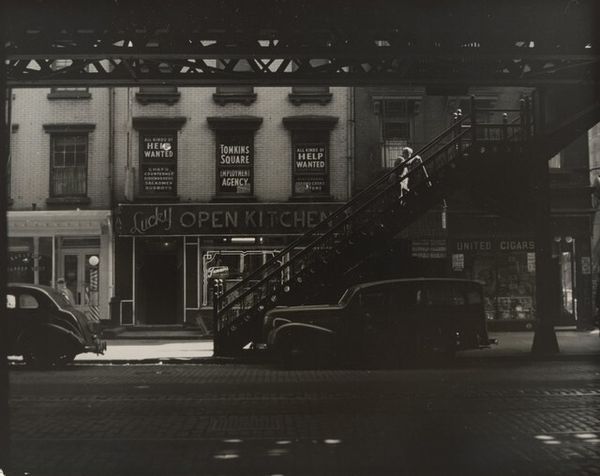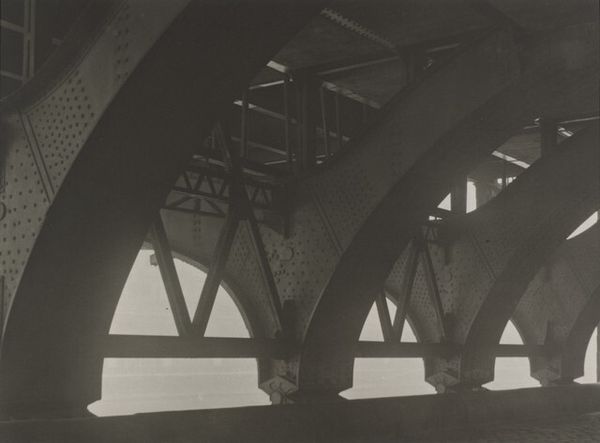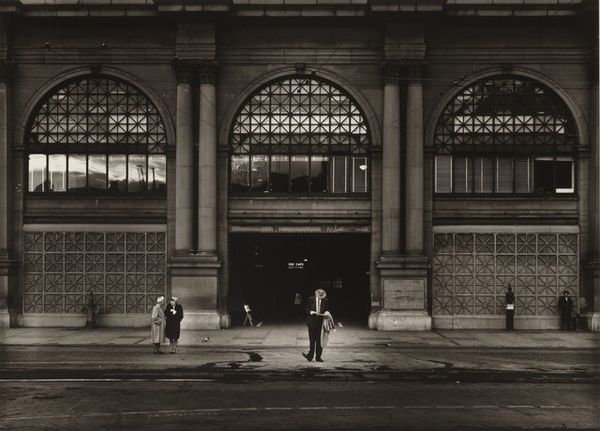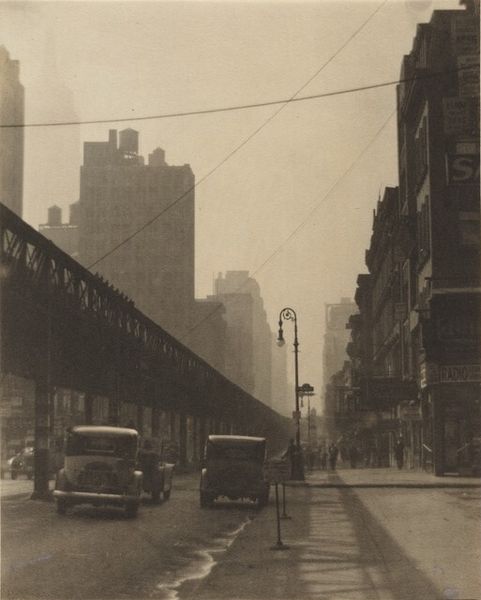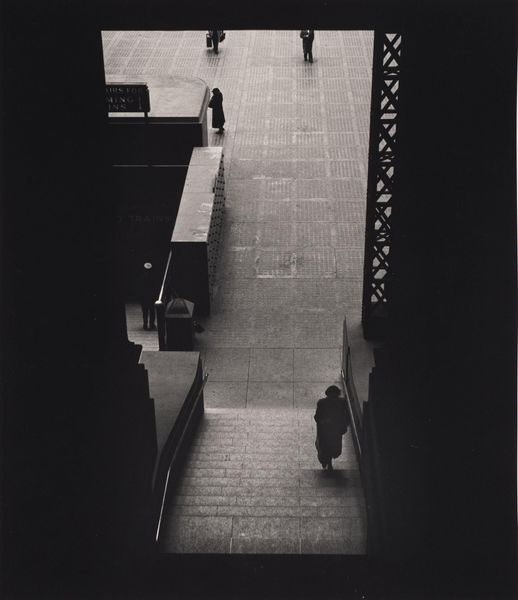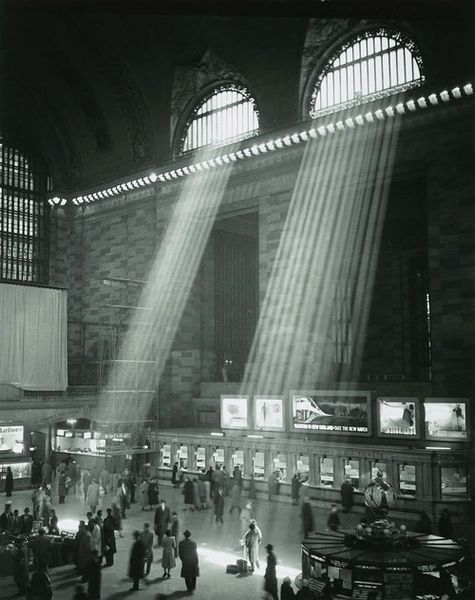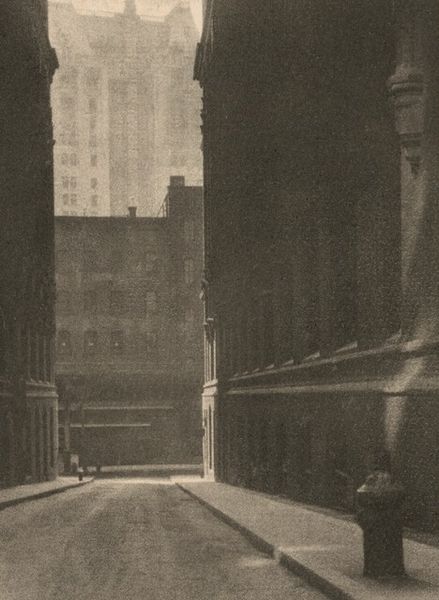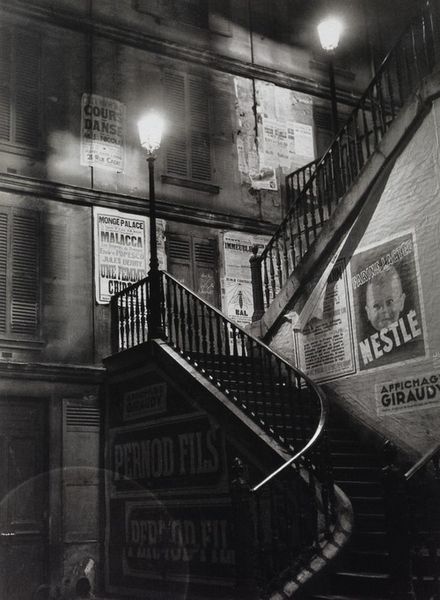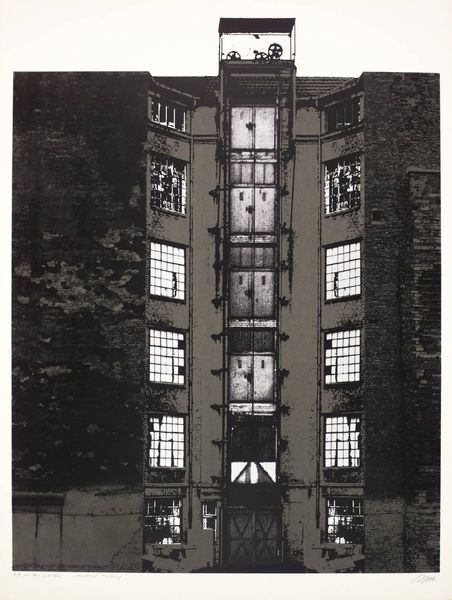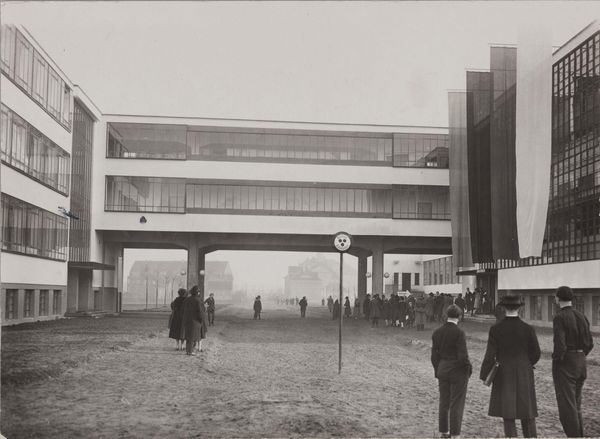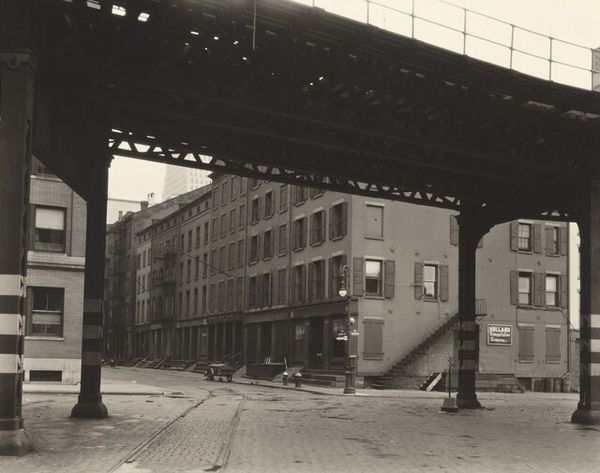
photography
#
black and white photography
#
photography
#
geometric
#
black and white
#
monochrome photography
#
cityscape
#
monochrome
#
monochrome
Dimensions: image: 26.5 × 33.9 cm (10 7/16 × 13 3/8 in.) mount: 40.8 × 50.8 × 0.1 cm (16 1/16 × 20 × 1/16 in.)
Copyright: National Gallery of Art: CC0 1.0
Curator: Berenice Abbott’s photograph, titled "Pennsylvania Station," captures a ghostly echo of that lost landmark. Dating from sometime after 1914, it gives you pause, doesn't it? Editor: Pause, yes, and a sharp intake of breath. There's such stark emptiness. It’s a black and white world of stairs leading nowhere, of geometries promising arrivals and departures that seem strangely… muted. Curator: Muted indeed, like a stage set between performances. Abbott's lens focused not just on architecture but on absence. Penn Station, as it once stood, was a grand Beaux-Arts masterpiece, a temple to travel. Editor: You wouldn’t guess it looking at this photograph. All the grander and fuss is faded, leaving almost clinical lines. Those stark metal structures feel cold, even oppressive. Was this intentional, do you think, a critique? Curator: Abbott wasn’t one for heavy-handed critiques. She chronicled New York's transformations, the beautiful and the brutal. I see a preservation of memory more than a condemnation. Penn Station was a marvel, then it was rubble, an egregious act of architectural vandalism. Editor: So this photograph functions almost as a eulogy, in monochrome. I see that. Still, there is an emotional detachment—a choice, perhaps, given what you are saying? A conscious resistance to sentimentalising stone. Curator: Perhaps. Abbott wasn’t driven by nostalgia. She saw the city as an organism in constant flux, and her work sought to capture those moments of change—the bones beneath the flesh. Think about the materials—stark monochrome really accentuates line and shape here. Editor: Right. What really strikes me is the hollowness, the vast empty space—as if all the energy and people who thronged here have simply vanished. Curator: An elegiac stillness, yes. Knowing the station's fate amplifies that, don't you think? In my view this photograph functions as a stark memento mori in this perspective. Editor: Precisely! I’ll never be able to experience the station that was but thanks to the way Berenice framed it, I am grateful to feel a mere ghost of the memory today. Curator: Absolutely. The work acts like a reminder—perhaps more powerful than words, don't you agree? A powerful and quiet memorial for the architectural casualty of progress.
Comments
No comments
Be the first to comment and join the conversation on the ultimate creative platform.
